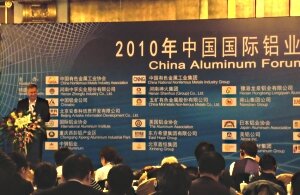Fluoride Emission Control In China
The background - collaboration with Asia-Pacific Partnership (APP)
Aluminium production is one of the fastest growing industries in China, which is now the biggest aluminium producer in the world. Seven countries in the Asia-Pacific region; Australia, Canada, China, India, Japan, South Korea and the U.S have formed the Asia-Pacific Partnership (APP) for Clean Development & Climate, with the purpose of accelerating the development and deployment of clean energy technologies. These are meant to allow for economic growth among the partners, while protecting the environment and society in line with the efforts of the UNFCCC and the Kyoto Protocol. 2010 China Aluminium Forum has addressed the importance of the initiative.

A primary objective of the Aluminium Task Force is to improve the environmental performance of aluminium smelters (reducing fluoride and PFC emissions in particular), while reducing costs through best practice application of existing equipment, and uptake of best available technology. LMRC, with its extensive aluminium smelter operational experience, has been brought in by the Australian Aluminium Council, and The Institute of Governance and Sustainable Development to assist in emission management and control projects in China. These are carried out in collaboration with CNIA (The Chinese Nonferrous Industry Association), the US-EPA, and several Chinese smelting representatives.
The situation
Generation of unwanted fluoride by-products from the aluminium smelting process is an unfortunate reality of the current state technology. However, the release of these fluorides into the potrooms and surrounding environment is unacceptable and must be minimised. There are legal, health, environmental and operational performance issues which drive all smelters to consider effective management and control of fluoride emissions. LMRC’s goal is to help smelters in China to meet their emissions targets, and to achieve the potential of their existing technologies.
The actions
LMRC has been working with a major aluminium smelter in Central South China. Our work is not only to improve the environmental performance, but also to increase process efficiency and reduce energy consumption. A customised Fluoride Emission Management Guide (FEMG) has been delivered which offers a path forward given the smelter's environment and current operational state. The guide describes key processes and operating parameters to be controlled, and proposes a management system to achieve this purpose. In addition, it is imperative to continue monitoring the fluoride emissions level in order to demonstrate the progress of the improvement efforts. The final stage of this initiative will be the deployment and publicising of an adapted China-wide fluoride emission management guide by the end of the year 2010. The same principles can also be applied to develop a customised Perfluorocarbons (PFC) Emission Guide for other smelters. Ultimately, meeting desirable PFC and Fluoride emissions targets rests upon the smelter having a sound control system at all levels, and will reflect positively on its environmental and economical performance.